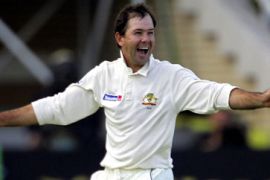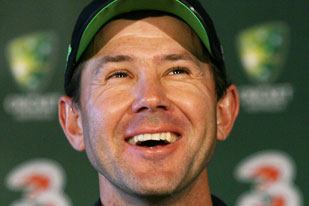Age may weary them
What hope the hosts? Chris Wang looks at the odds of keeping the Ashes down under.

 |
| Ricky Ponting: Will he still be smiling at the end of January? |
Labelled “Dad’s Army”, by former England captain Ian Botham, the average age of the predicted Australian starting eleven in the first Test is 33, with captain Ricky Ponting turning 32 after the third test.
NSW batsman Phil Jacques has been pressing for inclusion in the side and should the current partnership of Justin Langer (36) and Matthew Hayden (35) falter early in the series, a call up could be on the cards for the 27 year old from Wollongong.
Ponting has admitted to a slump in form ahead of the series with the captain suffering from a lack of quality batting time, while Damien Martyn’s last Ashes series is one he’d rather forget, averaging just 19.77 over nine innings.
Provided he doesn’t suffer from second season blues, Australia’s shining light could be Michael Hussey batting at number five, with the 31 year-old averaging almost 76, including four centuries and four fifties in his 11 matches.
The addition of Hussey at the expense of Simon Katich should be a huge benefit to Australia, and in hindsight the Australian selectors will be ruing the fact that they did not select the in form batsman in England 16 months ago.
Aussies forced to make changes
With all-rounder Shane Watson out through injury, the number six spot is up for grabs with selectors likely to go with batsman Michael Clarke over all-rounder Andrew Symonds or a fourth fast bowler.
One gets the feeling though that Clarke is yet to really establish himself in the Australian batting line-up after such a promising build up to his Test career, even though he had the third highest average (37.22) for an Australian in the last Ashes series.
Adam Gilchrist’s explosive batting at number seven makes him an automatic selection, however at 35 years of age, ready-made replacement Brad Haddin is waiting for his chance.
The Aussies have stuck with a four-pronged bowling attack over the past years, spearheaded by the deadly accurate Glenn McGrath and leg-spin king Shane Warne.
However, McGrath (36) and Warne (37) are the two oldest players in the squad so the pressure will be on for them to lead an attack limited in options.
Brett Lee will share the new ball with McGrath, but once batsmen come to terms with his blinding pace, there is little variation and he can go for plenty of runs.
Like the sixth batsman place, the fourth bowling spot is still yet to be decided, with Stuart Clark looking to return to the side after a successful tour of South Africa, and Queenslander Mitchell Johnson aiming to make his Test debut on his home ground.
South Australian quick Shaun Tait misses out for the first Test but may come in to contention later in the series, while NSW leg-spinner Stuart MacGill may also be utilised.
Confidence and complacency
Before the 2005 Ashes, Australia were favourites to win and secure what would have been a record ninth straight series, however England found new belief under the leadership of Vaughn, the batting of Pietersen, bowlers Harmison and Simon Jones, and of course Flintoff’s all-round game.
Some ill-advised decisions by Ponting at the toss and in the field didn’t help Australia’s cause, but their batting was their main downfall with Martyn, Gilchrist, and Katich failing to fire.
Regardless of the 2-1 loss in England, the tone before the 2006/07 series is the same for Australia with Aussie fans and their media expecting to regain the Ashes and to do it easily.
However, if England can pull together once again and play with the same confidence as last year, and if the Australians suffer from any sort of complacency, the series outcome may be much closer than many expect.